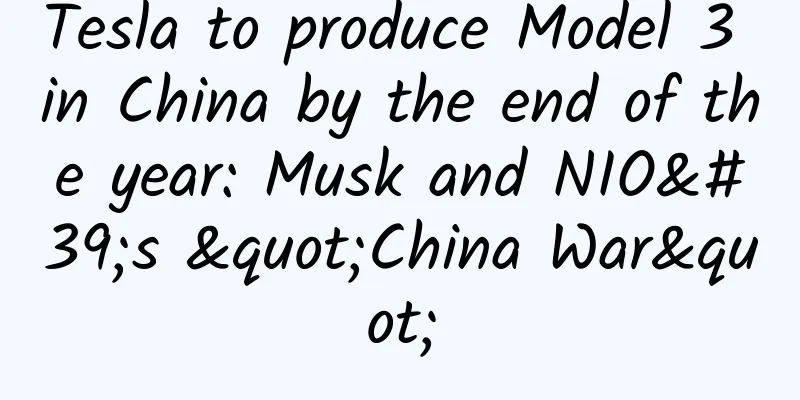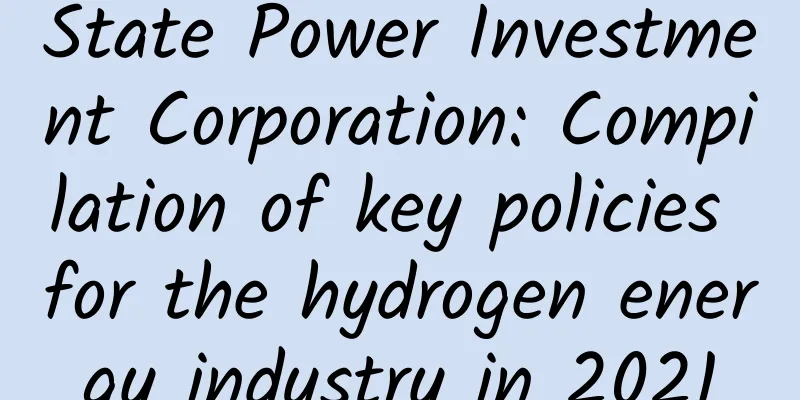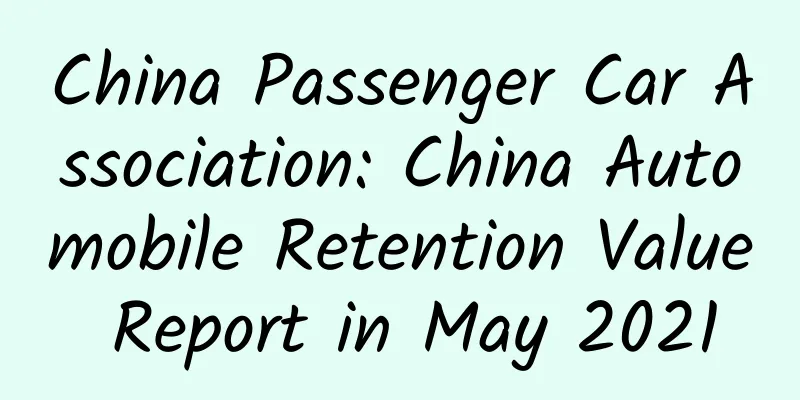Tesla to produce Model 3 in China by the end of the year: Musk and NIO's "China War"

|
Elon Musk is a man who has almost no secrets. Whether he is announcing the privatization of Tesla on Twitter or admitting in an interview with a reporter that Tesla almost went bankrupt last year, every speech he makes is like a performance. Therefore, at the groundbreaking ceremony of Tesla's Shanghai Super Factory (Phase I) on January 7, 2019, Musk even swayed and danced to the music on the spot, appearing particularly lively at this very grand ceremony. As the first wholly-owned automaker established in China after China relaxed restrictions on foreign equity in the auto industry, and the largest foreign-invested manufacturing project in Shanghai's history, Tesla's Shanghai Super Factory is highly anticipated. "The goal is to complete the initial construction of the Shanghai factory this summer, start Model 3 production at the end of the year, and achieve mass production next year," Musk said. But he also revealed on Twitter that the Shanghai Super Factory will produce entry-level Model 3 and Model Y for Greater China, while all other Model S and Model X, as well as high-end Model 3 and Model Y, will still be produced by the US factory. Although Tesla said that it will accelerate the construction of the Shanghai Super Factory based on the experience of the continuous increase in Model 3 production capacity in North America, according to Musk's past statements, the possibility of production at the end of this year is still in doubt. From the signing of the agreement on July 10 last year to the official start of construction today, the "Tesla speed" has been fully demonstrated in China. This is great news for Chinese car owners who are eager to own a cheap Model 3, but it will be a tough battle for the new forces in domestic car manufacturing. Internet car companies such as Weilai and Xiaopeng, which have just started to deliver, will compete with their "teachers" as soon as this year. The price drop of the domestic version of Model 3 delivered this year will impact Weilai and others. "Today, the groundbreaking ceremony of the Shanghai Super Factory is an example of Tesla's commitment to continue to increase investment in the Chinese market." At the groundbreaking ceremony of the Shanghai Super Factory, Musk's words were meaningful. For Tesla, in addition to being able to avoid the impact of tariffs, the importance of the Chinese market itself is self-evident: Tesla's sales in China doubled in 2017, with a total amount of more than US$2 billion, becoming the second largest market after the United States. This achievement was achieved when the Model 3 had not yet entered the Chinese and European markets. According to the delivery data released by Tesla recently, the production capacity of Model 3 in the fourth quarter of last year was 61,394 vehicles, 63,150 vehicles were delivered, and 145,846 Model 3 vehicles were delivered throughout the year. It is also worth noting that Tesla stated in an announcement on January 2, 2019 that more than three-quarters of Model 3 orders in the fourth quarter of last year came from new customers rather than early pre-orderers. This shows that on the one hand, Tesla has gradually digested orders other than the entry-level version of Model 3, and on the other hand, it shows that the appeal of Model 3 to American consumers is expanding. It is reported that after the completion of the Shanghai Super Factory, Tesla plans to produce about 3,000 Model 3s per week in the initial stage, and the annual output will climb to 500,000 pure electric vehicles after it is fully operational. However, Tesla is also cautious, saying that this plan is affected by local factors including regulatory approval and supply chain conditions. According to documents submitted by Tesla to the U.S. Securities and Exchange Commission (SEC) in November last year, Tesla handed over the production capacity of 3,000 Model 3s to the Shanghai factory. In the document, Tesla disclosed that the company will spend up to $6 billion on factories and equipment in the next two years. Before the Gigafactory goes into production, the Model 3 in China will still come from the Fremont factory in California, USA. Just after entering 2019, Tesla has announced that it will officially open the Model 3 electric car option to Chinese customers. The delivery of new orders is expected to start in March this year, and the delivery of early pre-order orders will start as early as February. Benefiting from the reduction of the US auto import tariff to 15% from January to March 2019, the delivery of Model 3 to the Chinese market in this time window is crucial. As for the price of Model 3, which the market is concerned about, Musk announced in March 2016 that its starting price is 35,000 US dollars, which attracted a large number of car owners to place orders. However, this low-end version of Model 3 has not yet been born, because the Model 3 at this price not only has no profit margin, but also will drag down Tesla's cash flow. Since then, affected by the changes in tariff policies, the price of Model 3 has been raised and then reduced, and the basic price is still about 300,000 yuan. However, after the completion and production of the Shanghai Gigafactory, the price of Model 3 is expected to be further reduced, which will further drive Tesla's sales in China and cause further impact on Weilai, which targets the mid-to-high-end market. Cui Dongshu, secretary-general of the National Passenger Car Market Information Joint Conference, analyzed to Beijing News Unicorn Technology (ID: dujiaojingkeji) that Tesla's price is expected to drop sharply by more than 40% after localization, while automobile analyst Ren Wanfu speculated that the price reduction will be around 20%. However, as Tesla's sales continue to grow, its subsidy dividends have also slowed down. Since Tesla's electric vehicle sales exceeded 200,000 in 2018, according to the U.S. federal government's electric vehicle tax incentive policy, Tesla's electric vehicle tax reduction will drop from US$7,500 in 2018 to US$3,500 in 2019. In order to cope with the impact of tax incentives, Tesla had to announce a unified price reduction of US$2,000 for Model 3, Model S and Model X in the United States, but this may have an impact on Tesla's gross profit margin. Last year's third quarter report showed that Tesla's GAAP automotive gross profit margin increased significantly from 20.6% in the second quarter to 25.8% in the third quarter, while non-GAAP automotive gross profit margin increased from 21.0% in the second quarter to 25.5% in the third quarter. Therefore, the market is worried about whether Tesla can make a profit in 2019. In this regard, Tesla pointed out that the future sales growth momentum of Model 3 will come from international market expansion, the launch of low-priced models and leasing services. While building the super factory in Shanghai, Tesla has established a financial leasing company in China. Industrial and commercial data show that the legal representative of Tesla Financial Leasing (China) Co., Ltd. is Zhu Xiaotong, general manager of Tesla China, with a registered capital of US$30 million. Tesla has paid close attention to the leasing business in recent years, and its leasing business revenue exceeded US$1 billion in 2017. In June last year, Musk said that the company may launch Model 3 leasing services this year. Coincidentally, on December 14 last year, Tesla sold US$837 million in auto leasing bonds to provide financial support for the company's leasing business. It is reported that after the completion of the Shanghai Super Factory, Tesla plans to produce about 3,000 Model 3s per week in the initial stage, and the annual output will climb to 500,000 pure electric vehicles after it is fully operational. However, Tesla is also cautious, saying that this plan is affected by local factors including regulatory approval and supply chain conditions. The first phase relies on assembly. It will take time to cultivate the local supply chain. From successfully winning the Shanghai Lingang land on October 17 last year to officially starting construction on January 7 this year, the Shanghai Super Factory and Tesla's pursuit of efficiency and speed in the United States are exactly the same. In the documents submitted to the SEC last year, Tesla stated that the Shanghai Super Factory will gradually improve the level of localization through local procurement and manufacturing, but at the same time emphasized that the timetable of this plan is affected by many uncertain factors, including regulatory approval, supply chain restrictions and factory construction speed. In fact, it is not easy for Tesla to achieve localized production in China. Taking the power battery, the most critical part of electric vehicles, as an example, Tesla currently uses lithium batteries produced by Panasonic of Japan. At present, the Shanghai Super Factory does not produce power batteries, so Tesla's domestic version still needs to rely on imports. According to the "2019 Import and Export Provisional Tariff Adjustment Plan" issued by the State Council Tariff Commission on December 24 last year, the import provisional tariff for lithium-ion battery monomers for new energy vehicles was cancelled, and the most-favored-nation tariff was restored. The tariff on imported power battery monomers and systems for new energy vehicles will be uniformly increased from 8% and 10% to 12%. Considering that the current tariff on imported cars in the United States is tentatively set at 15%, this means that completing assembly in China by importing power batteries will not save much tax costs. According to Musk's vision, the ultimate goal of the Shanghai Super Factory is to produce batteries and complete vehicles at the same time, and Panasonic CEO Kazuhiro Tsuga also stated in the earnings call in May last year that Panasonic will jointly produce batteries in China with Tesla. Therefore, it is more likely that Tesla's domestic version will continue to purchase Panasonic batteries. It is not an accidental move for Tesla to continue to cooperate with Panasonic. At present, Panasonic's power batteries are the lowest cost solution for electric vehicles. Last year, UBS disassembled the power batteries of Panasonic, CATL, South Korea's LG and Samsung through technical and cost analysis, and finally believed that Panasonic ranked first, LG and Samsung ranked second and third, and CATL ranked last. Where does the money for the construction of the Shanghai Super Factory come from? People familiar with the matter: Banks in Shanghai have already provided low-interest loans. Losses and lack of money are one of the labels that Tesla has been unable to get rid of in recent years. Although Tesla achieved a single-quarter profit in the third quarter of 2018, the $6 billion construction fund for the construction of the Shanghai factory is still attracting much attention. Tesla has been losing money almost all the time since Musk started investing in it in 2003. Since Tesla went public in 2010, it has only made profits in the first quarter of 2013, the third quarter of 2016, and the third quarter of 2018. Tesla's third-quarter report in 2018 showed a net profit of $516 million, compared with a net loss of $671 million in the same period of 2017. This is the third profitable quarter for Tesla since its listing. The key to its profitability is that its gross profit margin is increasing significantly while the production capacity of Model 3 is increasing. Musk said that when Tesla went from a car manufacturer of 100,000 vehicles per year to 340,000 vehicles per year, the company's profitability has changed dramatically. "The strong profitability of Model 3 is critical to the sustainable development of the company's business. In fact, the outstanding performance of Model 3 has saved Tesla, and the gross profit margin has exceeded 20% due to the increase in production capacity. Tesla achieved revenue of US$6.82 billion in the third quarter, a year-on-year increase of 128%. Among them, Tesla's automotive revenue in the third quarter increased by 82% month-on-month, mainly due to the sharp increase in Model 3 deliveries-in the third quarter of last year, Tesla delivered approximately 70,000 Model 3s in the US market. Despite this, its cash flow is still not enough to support the construction of the Shanghai Super Factory. In order to significantly increase the production capacity of Model 3, Musk said Tesla will speed up the timetable for building a factory in China, with the goal of bringing some Model 3 products to the Chinese market in 2019, and gradually improving the level of localization through local procurement of parts and manufacturing. At that time, the vehicles produced by the Chinese factory will only be sold in China. So, where does the billions of dollars of investment funds for its Shanghai factory come from? In the earnings call on August 2, 2018, Musk disclosed that the funds for the Shanghai factory will come from local Chinese financing, including bank loans and "local debt", without the need to raise funds by selling stocks. "I think for China, our plan is basically to use a loan from a local Chinese bank to finance the Shanghai Super Factory. "Musk said. Beijing News Narwhal Technology (ID: dujiaojingkeji) learned that with the attention and strong support of the Shanghai Municipal Government, some banks in Shanghai have provided low-interest loans for Tesla's Shanghai factory. Previously, Musk also had a private meeting with a senior executive of a well-known domestic real estate company, asking it to invest $2 billion to build a factory and purchase a production line, but no substantial progress has been made so far. People close to Tesla revealed to Beijing News Narwhal Technology (ID: dujiaojingkeji) that the main source of funds for building the factory is low-interest loans from local banks in Shanghai, and some banks have signed loan agreements with Tesla. In fact, Tesla's cash flow is still relatively tight, and many debts are due in a short time: $230 million of convertible bonds need to be paid in November 2018, a $157 million non-recourse loan has matured in December 2018, and another $920 million of convertible bonds will mature in March 2019. Although Musk and Tesla deny that the company needs to complete more financing by selling shares, analysts believe that Tesla's long-term lack of money is almost inevitable. This year, Goldman Sachs analyst David Tamberrino once predicted that Tesla would need to raise up to $10 billion to support operations before 2020, while Jeff Osborn, an analyst at investment bank Cowen & Co, predicted that Tesla would raise $3 billion in the fourth quarter and another $2 billion by the end of next year. Tesla has made it domestically. What will happen to Musk's Chinese apprentices "Li Bin"? As the originator of electric vehicles, Musk announced on January 7 that Tesla's Shanghai Super Factory officially started construction and will start producing the affordable Model 3 at the end of this year. So, are domestic companies such as Weilai and Xiaopeng Motors ready to fight? "Very good, competition makes heroes." Previously, a person in charge of Geely Automobile who did not want to be named told Unicorn Technology (ID: dujiaojingkeji). As early as July 2018, when Tesla announced the construction of a factory in Shanghai, Li Bin, chairman of Weilai Automobile, said: "Flowers in the greenhouse in California may not be able to adapt to the fierce and full market environment in China. I welcome Tesla to build a factory in China, which proves the importance of the Chinese market and gives consumers more choices. But the final victory must belong to Chinese auto brands. Maybe it will be NIO, or maybe it will be other companies, especially those among the new car-making forces that are successful in entrepreneurship/innovation, which will represent the victory of Chinese auto companies. "Nowadays, Tesla's production capacity problem is expected to be solved, and tariffs will be further reduced, which also means that the time window left for "China's Tesla" is getting smaller and smaller, and their plan to seize market share by relying on price advantages has once again encountered a strong opponent. In the same vein as their teacher, Tesla apprentices such as NIO and Faraday Future are also facing delivery difficulties. In July this year, He Xiaopeng, the founder of Xpeng Motors, mentioned in his circle of friends that no Internet car company could achieve the delivery of 10,000 vehicles within the year. Li Bin, the founder of NIO, immediately announced a bet with him, saying that NIO would definitely achieve the delivery of 10,000 vehicles before the end of the year, and said, "Whoever loses will lose a NIO ES8 or an Xpeng car to the other party. "On December 12, 2018, the delivery of Xiaopeng Motors' first model, Xiaopeng G3, was announced, marking the entry of Xiaopeng Motors into mass production. Xiaopeng Motors, also a new car-making force, is one of the earliest established new energy car companies, but it is also the latest to deliver among the new forces. At present, NIO has delivered a total of 3,350 ES8s, of which 3,268 ES8s were delivered in the third quarter, about 9% higher than the original plan, but the delivery of 10,000 vehicles by NIO is still uncertain. So far, the three major new car-making forces, NIO, WM Motor and Xiaopeng Motors, have all fulfilled their delivery commitments and entered the stage of capacity climbing. However, the new car-making forces are facing an unprecedentedly complex situation. Within the industry, these "upstarts" in car manufacturing are competing everywhere, with financing wars, marketing wars, and price wars one after another. As the scale of vehicle delivery, product quality problems have also been exposed one after another, and poor endurance and frequent software failures have become the focus of complaints from car owners. Externally, the Chinese auto market began to enter a downward channel in the second half of this year, and the sales of new energy vehicles continued to rise before the subsidy reduction. However, with the impact of Tesla's localization and the accelerated entry of foreign brands into China, the time window for China's new car-making forces is closing. Almost every Chinese apprentice of Musk does not think that his company is imitating Tesla, but the fact is that after Tesla successfully entered the Chinese market, the capital story of "China's Tesla" naturally no longer exists. Weilai Automobile has taken the lead in landing, but Xiaopeng, Weimar and others behind are still hungry, and "survival" will become the main theme of these apprentices.As a winner of Toutiao's Qingyun Plan and Baijiahao's Bai+ Plan, the 2019 Baidu Digital Author of the Year, the Baijiahao's Most Popular Author in the Technology Field, the 2019 Sogou Technology and Culture Author, and the 2021 Baijiahao Quarterly Influential Creator, he has won many awards, including the 2013 Sohu Best Industry Media Person, the 2015 China New Media Entrepreneurship Competition Beijing Third Place, the 2015 Guangmang Experience Award, the 2015 China New Media Entrepreneurship Competition Finals Third Place, and the 2018 Baidu Dynamic Annual Powerful Celebrity. |
<<: Tesla CEO Musk: China has become the global leader in electric vehicle applications
>>: Byton is seeking at least $500 million in financing, with a valuation of more than $4 billion
Recommend
New Brand Content Marketing Tips!
Content marketing has always been the focus of br...
Unlock Didi's mysterious function and test the "Didi Ticket" zero-threshold taxi-hailing experience
You don’t need to download Didi, register an acco...
Baidu bidding promotion planning, what should we pay attention to in the system of Baidu bidding promotion plan?
A high-quality bidding promotion plan is the begi...
How does self-heating underwear generate heat out of thin air?
Key Points ★ Heat does not come out of nothing. H...
A novel writer will show you how to make money by writing novels in 30 days. Simple and practical training
We will break down every key step of writing a no...
Fatigue, drowsiness, constant yawning, lack of energy... could it be cancer?!
Friends If you often feel Fatigue, drowsiness, co...
Why can a cat's eye see the whole outside world?
"Seeing a leopard through a bamboo tube"...
Unity3D MOBA real-time competitive game development with engineering materials
Unity3D MOBA real-time competitive game developme...
All mobile phones are equipped with AI, but why do you disdain it?
Watch any mobile phone launch event and you will ...
Is it self-deception or is it your brain deceiving you? The truth about lies
© Jan Buchczik Leviathan Press: In absolute terms...
How to advance a brand? Start with these 3 systems
There is a process for consumers to come into con...
Is it that Ms. Dong is unable to resolve Gree’s dilemma, or does she simply not want to resolve it?
For Gree shareholders, 2020 was a waste of time. ...
What kind of wine is suitable for drinking in winter? What kind of wine should I give as a gift?
What kind of wine is suitable for winter? Drinkin...
Investment Magic Course - Fund Investment Ultimate Edition
[L0: Preschool] Lesson 0: You make money so that ...
10 Tips for Developing with Storyboards
Rather than going into a comprehensive guide on h...


![Chengdu tea tasting resource strategy is shared with everyone. All those who have arranged it are pushed [Sincere Night View]](/upload/images/67cc0eed35b5d.webp)






